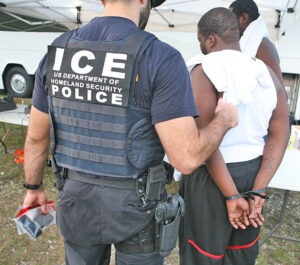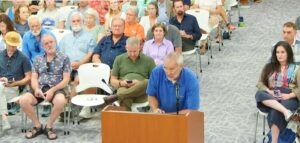The Florida Keys have the go-ahead for up to 900 new building rights throughout the island chain, following Gov. Ron DeSantis’ signature on Senate Bill 180 last week.
For decades, development in the Florida Keys Area of Critical State Concern has been regulated by the Rate of Growth Ordinance (ROGO), predicated on a maximum hurricane evacuation time of no more than 24 hours for permanent residents.
The new bill, signed into law on June 26 by DeSantis, will raise that time frame to 24.5 hours, allowing additional building in the hope of staving off costly lawsuits from owners of vacant lots who otherwise may have been turned down for permits.
The exact number of permits to be doled out will hinge on evacuation modeling run by the Florida Department of Commerce, with up to 900 rights distributed over a minimum of 10 years.
The new units are reserved exclusively for one right per vacant, buildable parcel, prioritizing owner-occupied homes, affordable housing and workforce housing, the bill states, and must be split among the Keys’ jurisdictions based on the number of vacant buildable lots in each jurisdiction.
The new law follows more than a year of exhaustive debate among Keys residents and government leaders over how to handle the future of development in an island chain with dwindling buildable land. Dozens of special meetings, workshops and surveys throughout 2023 and 2024 weighed the cost of lawsuits and a need for affordable and workforce housing against traffic, infrastructure, environmental and evacuation safety concerns.
Earlier this year, requests for new allocations were included in bills filed by state Rep. Jim Mooney and Sen. Ana Maria Rodriguez – 500 units over 10 years with a 24.5-hour evacuation in Mooney’s House Bill 995 and 3,550 over 40 years with a 26-hour evacuation in Rodriguez’s Senate Bill 1326.
Both bills were later amended to reflect a matching 825-unit request with a 24.5-hour evacuation, but eventually died, leaving the immediate future of Keys building in an addition to Pinellas County-based District 18 Sen. Nick DiCeglie’s bill. A 26-hour evacuation for the Keys also appeared in edits to Senate Bill 1730, filed by Miami-Dade’s District 38 Sen. Alexis Calatayud – but those amendments were removed from the final version.
What’s next?
While SB 180 lays the framework for new building rights, Keys jurisdictions could realistically be at least six months to a year away from distributing those units to property owners. How quickly the rights will be given out – 10 years or more – remains a policy decision for elected officials.
The pool of up to 900 units marks the first time that the Keys have received a significant addition to building rights since 2012, when 2010 census data was used in 24-hour evacuation modeling. In 2018, then-Gov. Rick Scott awarded a pool of 1,300 new rights to the Keys in an effort to replace workforce housing lost in Hurricane Irma – but those units were restricted to evacuate before the 24-hour period, and later faced an extensive legal challenge.
The new bill tasks FloridaCommerce with re-running evacuation models based on the new clearance time of 24.5 hours. The results of this modeling will inform a new Memorandum of Understanding (MOU) establishing exact numbers of building rights to be given to each ROGO-governed jurisdiction throughout the island chain. As they did in 2012, each affected jurisdiction will sign the MOU along with FloridaCommerce officials to cement the relative distribution of rights among the municipalities.
From there, the timeline to fully accept and distribute the new units will depend on each government’s ability to incorporate the building rights into its comprehensive plan and land development regulations. That process could be more immediate or take six months or longer, depending on whether each government’s existing language allows for the addition of new units with changes to state law.
For unincorporated Monroe County, which should stand to receive the largest share of new rights, the required process to adopt necessary changes will take until at least December, planning and environmental resources director Devin Tolpin told the Weekly.
The months needed to finalize the new units could be particularly critical for cities like Marathon, which has already exhausted its supply of conventional building rights.
Speaking to the Weekly on July 1, Marathon Planning Director Brian Shea said the city now relies on a dwindling number of permits made available through the city’s Voluntary Home Buyout Program and limited rights taken back from expired building permits to avoid takings cases. In recent years, Marathon has stemmed its award of building rights to a trickle, granting just five new building permits every six months.
Extra 220 units still unclear
As governments work to finalize the distribution and timing of SB 180’s new building rights, officials told the Weekly the fate of an additional 220 building rights theoretically allowed, but not yet awarded, under the previous 24-hour evacuation rule was still up in the air.
In October 2024, the Monroe County Commission unanimously elected to request these rights from the state, later approving a separate resolution asking for an evacuation time change from 24 to 26 hours.
But in December, FloridaCommerce leaders reportedly told Keys governments that the department was unlikely to issue those 220 rights until existing allocations were exhausted throughout the entire island chain, prompting debate about whether Keys governments could, or should, “share” their remaining rights.
Whether these rights could be awarded separately from, or as a portion of, the new allocations allowed in SB 180 remains to be seen.





















